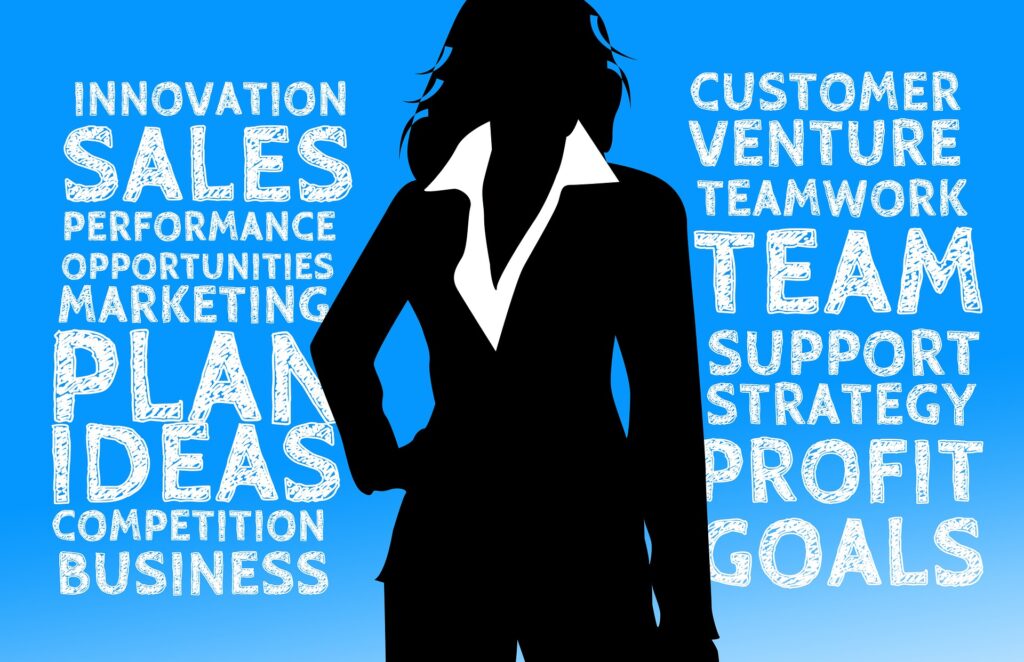
Sales Framework
Sales Framework:
What is the sales Framework?
A sales Framework is a set of strategies under one bunch for getting the leads and closing the deal easily.
Let’s understand the sales meaning in the business
Sales are the crucial step of business structure, It is the target behind every single strategy,
whenever we make sales strategies and do the analysis that covers each and every
department of the business to get the best solution to the problem. and goal.
and these frameworks are something used at a time of selling, and strategy to execute these frameworks
has decided at a time of sales analysis & strategy making with the help of the competitive intelligence team, the research team
and strategic alliance team.
What are the important factors you have to be aware of for executing these models and frameworks?
- plans to the factors that can play an important role during the execution
- remember to grab the opportunity to execute the factors of a successful business.
- what is the major preparation you have to do before executing the sales framework?
Things that cover all these three factors are as follows:
- Assess the basics of sales operational variables
- Structure the sales area to support special customers management
- Be aware of and apply the conceptual framework of leadership in sales
- Manage the sales training functions to improve training effectiveness
- Support sales performance management planning
- Structure the sales area to manage post-sales activities
Sales models and framework:
Consultative Selling Model

This scheme describes how one of the sales frameworks the consultative model operates. All starts with expertise.
The salesperson must have a profound knowledge of the customer’s business.
It’s not enough to be an expert on his product or service, The expertise drives trust.
The client recognized the salesperson’s know-how, who then gains credibility.
Over time, trust converts to loyalty in the relationship between the customer and the salesperson.
How can we make this happen?
First, let’s define what exactly consultative selling is.
In a work published in 2001 called,
Developing Loyal Customers with a Value-Adding Sales Force, Examining customer satisfaction and
the perceived credibility of consultative salespeople.
They define consultative selling as a way to better understand and
develop solutions that help address the wants and needs of their respective clients.
The core of consultative selling is problem-solving.
The salesperson must have the ability to help the customers to identify the problems and provide solutions.
And of course, the solutions will be provided by the salesperson’s company.
We could agree that understanding or uncovering customers’ problems and
proposing solutions can help establish a long-term business relationship.
But it can get even better,
Mack Hanan In his book, Consultative Selling, has a different take on what consultative salespersons must sell.
Consultative sales are the sale of a positive return on the customer’s investment.
The economic impact of what is sold, not the components of the sale themselves.
The conclusion is that loyalty will come from continuously providing solutions to improve sales or decrease costs.
In other words, loyalty comes from the fact that the salesperson continuously
provides business solutions that deliver a return on investment.
Customer Centric Model

The sales framework Customer-Centric Model is completely focused on customer needs, requiring a great understanding
of customer strategies, processes, and operations as a way to meet their needs.
Companies need to spend time and energy to accurately diagnose customer needs, generate knowledge of their needs
and understand them deeply. Keeping a long-term relationship with customers is typical of Customer Centric Selling,
and it is different from the traditional sales model, in which the sales pitch is typically ready and does not consider the client’s needs.
As a result, the solution the suppliers suggest is often more beneficial to the supplier than to the customer.
Most people don’t like to receive unrequested suggestions, but when they realize that the salesperson
is willing and able to understand the customer’s problems, their attitude tends to be much more favorable.
Note:
In the Customer-Centric Model, the sales process often takes a long time and effort,
therefore must make sure they use their time effectively and do not waste time with
companies with little or no potential. The approach is the only way companies can fulfill
their responsibilities to the shareholder.
Professional Selling Skills

The sales framework Professional Selling Skills are probably the most used selling technique in the world.
Different from models we have seen so far, PSS is a cake recipe type of technique.
This means that in PSS there is a proscribed sequence, start doing this then do that, if a happens do b, etc., etc., etc.
PSS, also known as needs satisfaction, was created inside the Xerox company in 1968.
Xerox invested $10 million in the development of the professional selling skills methodology.
And later, in 1972, the company created Xerox learning systems to sell their new methodology.
This technique can be broken down into four stages.
First needs identification, second presentation,
third objection handling, and fourth closing.
We will now deep dive into each of these stages. In order to explore them we will have four parts,
needs identifications, presentation, objection handling, and closing.
But before we move on there are three definitions we must present that are key to the PSS technique
and they are features, advantages, and benefits.
A feature is generally a physical characteristic that when declared makes the client say so what?
An example of a feature, our automotive tires have the same technology used by the aerospace industry,
the client will say so what?
An advantage is a performance characteristic that when declared makes the client think can you prove it?
An advantage example, our tire withstands impacts twice as hard as a regular tire, it will not be damaged by potholes,
will last longer, and the client says can you prove it?
Finally, a benefit is a positive outcome resulting from the use of the product or service, the client thinks I need to buy this.
An example of a benefit is with our tires you will drive with greater peace of mind and will save money.
Okay, now we move on to needs identification.
Our example for this lesson will deal with a situation in which we’re selling a
customer relationship management, CRM, and software in a business-to-business setting, this software is called Surefire.
As we have learned, PSS is also called needs identification and
in order to identify the needs of a particular customer
we’ll apply the technique called questioning.
There are three tools you will use to apply questioning, open-ended questions, closed-ended questions, and benefit statements.
So open-ended questions, what do they do?
They make the customer speak freely and extensively about his or her needs, and attitudes
and they are used at the beginning of the meeting or at any point for clarification.
Let’s give an example, how is your current CRM system performing?
What are the comments the sales force has on your current CRM software?
Closed-ended questions, what they do
direct the client to a specific area where you want to go,
and a simple choice must be made like yes or no.
They reveal specific needs or attitudes when open-ended questions do not work.
and they direct the client too needs that your product or service can fulfill.
For example, does your current CRM software meets your sales force needs?
Or, do your call centers have problems with custom data synchronization?
Benefits statement, what do they do?
They describe a highly probable need of the client and they present a benefit of your product or service that fulfills this need.
It directs the call to a topic you want to talk about and changes the focus of the conversation.
Also, it can be used when the client has just a few minutes to see you.
For example, the majority of CRM systems have glitches with synchronization and
that’s why our Surefire software offers the perfect sync feature.
Or, clients tell us our software provided a more accurate data synchronization.
presentation
it’s time to present the benefit that will solve the problem. What do you do?
You agree with your client’s need and this is called Supporting.
Then, you present the benefit your product or service fulfills.
The presentation of the benefit can be at two moments.
During the questions, when a need arises that can be satisfied by your product or service.
Or to introduce important benefits that can lead to the closing of the deal.
For example, I agree with you,
important customer information deletion means loss of revenues.
Our Surefire software has doubled the storage capability. Or, exactly our product was created thinking
about this weakness, which all competitors have.
Now it’s a time of objection handling
sometimes, you have to deal with objections. Don’t let objections discourage you, you can deal with them.
Let’s see how. There are different kinds of objections.
the first one being Skepticism.
Skepticism happens when your customer likes the benefit you presented but thinks it is too good to be true.
The client may say something like, I think it is impossible for our CRM system to have less than 0.1% error margin in synchronizations.
So, you should follow this prescription, first, to reaffirm the benefit.
Indeed our CRM system does have a 0.1% error margin in synchronizations. Then offer proof,
see this is statistics collected from our customers show this very low error margin can be achieved in real life.
Finally, you expand the benefit. So Mr. Client,
the very low margin of synchronization errors has been shown in real life. Customer data is preserved guaranteeing your revenues.
The second one is Indifference.
Here the customer shows he or she does not care about the benefit you have offered.
He sees no value in it. How do you deal with indifference?
You employ close-ended questions proving unmet needs.
Or you go ahead and close the sales and try to make the client react.
You must show the indifferent client, he or she has in fact needs that can be fulfilled by your value offer.
Going back to our customer relationship management system example.
You might say,
I can see that a big amount of data loss due to poor synchronization would not affect your company, correct?
And the answer would be for sure, of course, it would, You just took your client out of his state of indifference.
The third one is a misunderstanding.
It can happen when the client gets a negative impression of your product or service that is wrong.
The way to deal with a misunderstanding is to repeat questioning, answer directly, clarify the misperception, and offer proof if needed.
An example, your concern is that with our CRM system, you would have to change to another cloud storage service, correct?
Well, I’m happy to say our CRM system, we work with all the major cloud services, right out of the box.
The fourth one is the drawbacks.
Drawbacks occur when the customer perceives some disadvantage in your offer.
This is how you should deal with a drawback objection.
Repeat questioning, minimize the disadvantage, and
emphasize the relevant benefits of your product or service.
Time to close the deal
Right now, there is just one step missing to close the deal. Now, getting the orders seems easy.
That’s not so. Many salespeople find this the most challenging part of selling. To close a deal,
there are two things you have to do, summarize the benefits accepted by the client,
and get their commitment. You should use the closing technique when the client
shows signs of intention to purchase, or as the natural conclusion of the selling process.
Here is an example of how to summarize the benefits accepted by the client.
So, we both agreed that synchronization failure is a major issue, but it can be eliminated with the Surefire CRM software.
And this is an example of how to get the commitment to purchase.
I can set up a software trial for next week, so you can confirm its accuracy, Another example of getting commitment to purchase.
Do you want our technicians to come this week or next week?
Fantastic. You have just closed the deal,
and the contract has been signed.
Closing the deal is a complex matter,
and there are other theories about it.
We will talk about them in a future lesson.
S P I N Selling Model

The sales framework SPIN means Situation, problem, implication and need a payoff.
SPIN Selling is a book written by Neil Rackham back in 1988, but it remains influential.
Maybe because it comes from an original idea based, according to the author of the analysis of 35,000 sales calls.
So it has this aura of a highly scientific approach. SPIN can be considered one form of solution selling.
It is quite structured. You want to take your client step by step in the process.
S, P, I, and N.
Conceptually, spin is based on needs identification, The principle is that in complex sales,
the problem is not evident to the customer. So no problem, no need, no sales.
Another cornerstone of SPIN is the intensive use of open-ended questions, A concept we got to know during our PSS lesson.
But remember that when using SPIN, open-ended questions must not be random ones. There are specific questions for each step.
Situation questions, problem questions, implication questions, and need-payoff questions.
Let’s analyze each of the SPIN question types,
starting with situation questions, Situation questions are aimed at gathering information about your client.
For example, when did you purchase your current equipment?
Problem questions probe for areas of difficulties or dissatisfaction.
They try to awaken implied needs.
An example,
do you worry about time spent on corrective maintenance of your machines?
Implication questions are more complex. They go further ahead and turn implied needs into explicit ones.
An example is how constant maintenance work affects your productivity.
Finally, need-payoff questions are still more sophisticated and used a lot by successful salespeople.
They open the door to benefits presentation.
For example, would decrease the number of corrective maintenance
time by 50% to improve your profitability?
Conclusion:
These are some most used sales frameworks which can be applied by both b2b and b2c businesses,
but remember how you have to implement
you have to decide on your own according to
your business situations and conditions.
Leave a Comment